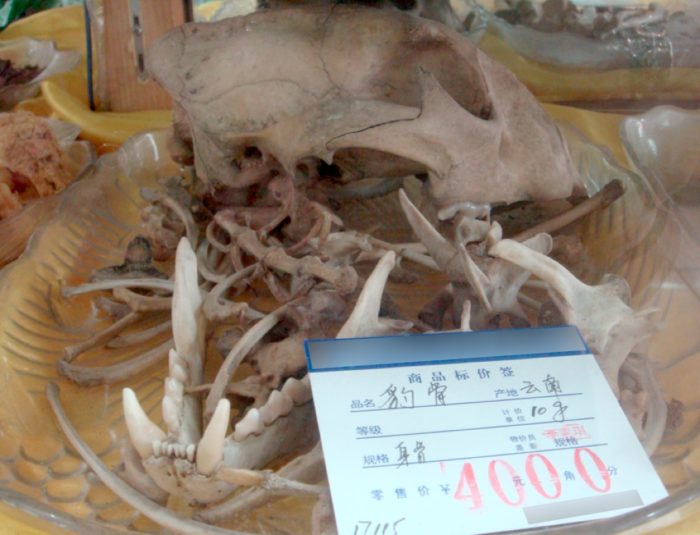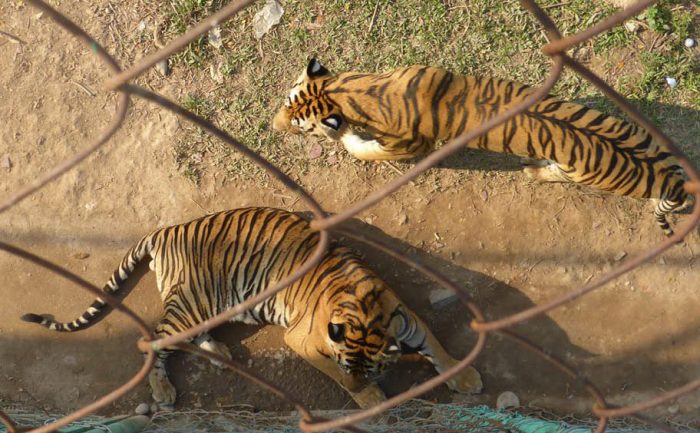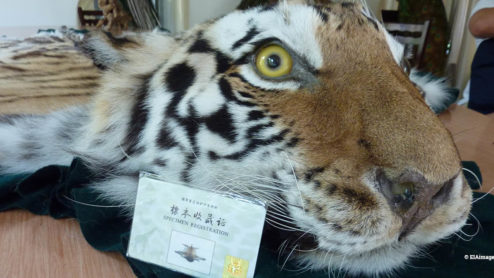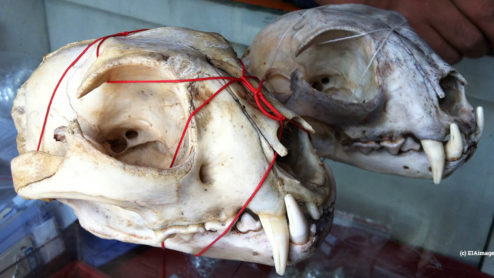China’s revised Wildlife Protection Law goes live – but it’s a missed chance to help endangered species
As China’s amended Wildlife Protection Law comes into effect, EIA reiterates its concerns about the law’s encouragement and allowance of the utilisation of threatened wild animals for commercial purposes.
We call on the National People’s Congress of China to continue to review the law – effective from 1 May – and take measures to prohibit all commercial exploitation of threatened wild animals.
We recognise and appreciate where progress has been made – the amended law does strengthen the protection and restoration of important ecosystems, improves the scope for law enforcement and maintains the ban on consuming wild animals as food. We also recognise that tighter measures for disease control have been spelt out in the Animal Disease Prevention Law, updated in 2021.
However, these measures fall far short of the changes required, given China’s prominence as a destination for both legally and illegally sourced wild animal parts and derivatives.

The price of wildlife utilisation – 12.7 tonnes of pangolin scales seized in Singapore (c) National Parks Board of Singapore
The amended Wildlife Protection Law continues to allow the breeding and utilisation of even the most endangered and protected species for commercial purposes. On the one hand, it provides for threatened wild animals to be listed as “Species under Special State Protection” and, on the other, it allows these same species to be bred, traded and utilised for captive breeding (which the law seems to treat as an end in itself), public exhibition and shows, cultural relics protection, medicine and other undefined special circumstances.
The lack of clear definitions for key terms such as “utilisation”, coupled with the exemption for “other special circumstances”, provide scope for species with the highest level of protection to be potentially bred and used for any purpose. What the Law gives with one hand, it takes away with the other.
China remains the primary destination for illegally sourced parts and derivatives of many threatened wild animals, such as tigers, leopards and pangolins. The allowance for commercial utilisation of these species, coupled with legal ambiguities, keeps consumer demand for their products high, driving poaching and illegal trade in other countries.
EIA research indicates that while leopards and pangolins continue to decline in the wild, with poaching and trade being a primary threats to their survival, traditional Chinese medicine (TCM) products claiming to contain leopard bone and pangolin scales continue to be licensed and sold online in China.
As of 2023, TCM products associated with at least 43 permits listed pangolin as an ingredient and TCM products associated with at least 57 permits listed leopard as an ingredient. These products are available online and are produced by at least 76 Chinese companies which have been issued National Medical Products Administration (NMPA) permits to manufacture them.
This continues despite calls by the international community through the Convention on International Trade in Endangered Species of Wild Fauna and Flora (CITES) to close the legal domestic markets for leopards and pangolins which are contributing to poaching and illegal trade.
The amended Wildlife Protection Law further entrenches the approach of captive breeding and farming of wild animals, with its attendant risks for both wildlife and human health. It provides not only for captive-bred populations of species to be exempted from protections, but for their categorisation as livestock. This increases the risk of zoonotic disease spill over in China and undermines the benefits achieved from the ban on consumption of wild animals as food.
There is also no apparent safeguard to prevent species with even the highest degree of protection from being categorised as livestock.
With the review of the Wildlife Protection Law in light of the COVID pandemic and China’s hosting of the 15th Conference of Parties of the UN Convention on Biological Diversity, there was a great opportunity for China to adopt a new approach, close legislative gaps and play a leading role in the conservation of wildlife.
This opportunity appears to have been missed.
We nonetheless urge members of the National People’s Congress to continue to review the law and take measures in the near future to, at a minimum, prohibit domestic commercial trade in the parts and derivatives of threatened wild animal species, prohibit the captive breeding of threatened species for commercial purposes and extend the ban on consumption of threatened wild animals as food to other forms of consumption, such as medicinal and ornamental use.





